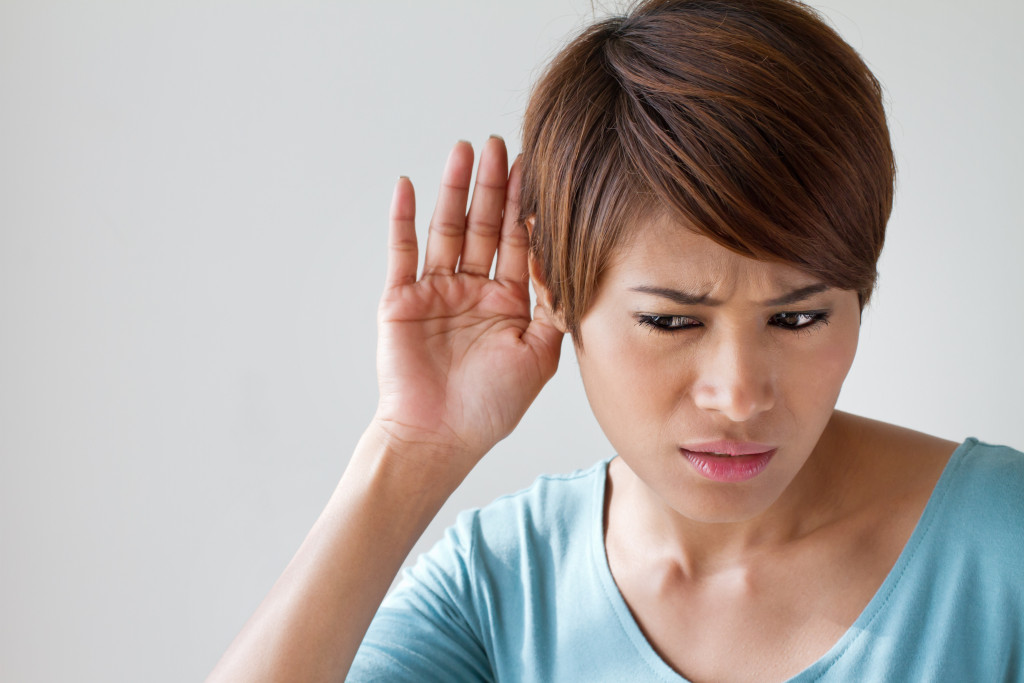The ear is part of the auditory system responsible for hearing and balance. The ear consists of three main parts: they are the outer, middle, and inner ear.
The outer ear includes the skin-covered portion that protrudes from the side of the head (the auricle or pinna) and the external auditory canal, which leads to the eardrum. The middle ear has three tiny bones. They transmit sound vibrations from the eardrum to the inner ear. The inner ear includes fluid-filled semicircular canals that help maintain balance, as well as the cochlea, the structure that contains the organs of hearing.
These parts work in tandem to detect sound waves and convert them into electrical impulses sent to the brain, where they are interpreted as sounds. Hearing is an essential part of people’s daily lives. Unfortunately, the ear is often prone to all sorts of infections.
Ear Infections
Ear infections are a common problem, especially in children. In fact, according to the American Academy of Pediatrics, many children will have at least one ear infection before they turn three. Ear infections are more common in winter and spring and tend to run in families.
The ear is a sensitive organ that can be easily irritated by bacteria, viruses, fungi, or other foreign substances. This can lead to an infection, which can sometimes be quite severe.
There are three main types of ear infections: outer ear infections (otitis external), middle ear infections (otitis media), and inner ear infections (labyrinthitis).
Outer Ear Infections
Outer ear infections are also known as swimmer’s ear. They usually occur when water gets trapped in the ear canal, providing a warm, moist environment ideal for bacterial growth. Symptoms of outer ear infections include pain, itching, redness, and discharge from the affected ear.
Middle Ear Infections
Middle ear infections are the most common type of ear infection. They usually occur when fluids build up behind the eardrum, causing pressure and pain. Symptoms of middle ear infections include fever, ear pain, trouble hearing, and discharge from the affected ear.
Inner Ear Infections
Inner ear infections are also known as labyrinthitis. They usually occur when a virus or bacteria enters the inner ear through the eustachian tube (a small passageway that connects the middle ear to the throat). Inner ear infections include vertigo, dizziness, nausea, vomiting, and trouble hearing.

Symptoms of Ear infections
Symptoms of ear infections can vary depending on the location and severity of the disease. The most common symptoms of ear infections include:
- ear pain
- trouble hearing
- discharge from the ear
- fever
- vertigo
- dizziness
- nausea
- vomiting
Severe ear infections can lead to serious complications, such as hearing loss or brain damage. Therefore, if you think your child may have an ear infection, it is vital to see a doctor as soon as possible.
Ear infections are relatively common among children and adults. The first step in treating them is through a diagnosis.
Diagnosing Ear Infection
There are a few ways that doctors can diagnose ear infections. The most common is through a physical examination of the ear. This usually includes looking inside the ear with an otoscope, a tool that has a light and magnifying glass.
The doctor may also use other tools, such as a tuning fork to test your hearing. In some cases, the doctor may need to order a CT scan or MRI to get a better look at the ear.
Treating Ear Infection
Once the doctor has diagnosed an ear infection, they will likely prescribe antibiotics. These are typically taken for ten days.
The doctor may also recommend pain relief medication if the infection is severe. Over-the-counter pain relievers, can also help reduce pain and inflammation.
You can do a few things at home to help ease the symptoms of an ear infection. This includes placing a warm cloth over the affected ear, taking showers instead of baths, and avoiding loud noises.
You should also avoid swimming until the infection has cleared up.
Preventing Ear Infections
One of the best ways to prevent ear infections is by cleaning your ear.
Ear Cleaning
A clean ear is less likely to get an infection. However, don’t do this by yourself. Cotton buds and other objects can push the wax further into your ear and cause damage.
The best way to clean your ear is by visiting an ear professional. They use an ear micro-suction to clean your ear safely and quickly. The suction is gentle, and it’s improbable that you’d feel it. It’s the safest way to get your ear cleaned.
Avoid Smoke
Smoke can irritate the ear and lead to infections. If you smoke, quitting is the best way to reduce your risk of ear infections.
Ear infections are relatively common among children and adults. However, knowing the symptoms and how to prevent them can reduce your risk of getting one. So make sure to prevent it from happening to you as much as possible.




